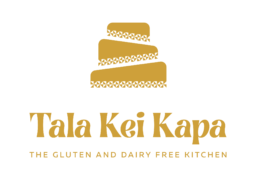Removing dairy from your diet is not something that you can easily transition into. Especially when all your life you have been indulging in all the dairy you could have. It’s really hard to let go of the pastries, the chocolate and for me, it was the butter and cheese.
After finding out that I had an intolerance and sensitivity to dairy, it took me about two years before I finally said goodbye to dairy. I thought perhaps it would be good to share how I actually left dairy completely out of my diet. If you’re struggling with the dairy free diet or caring for a child/children or an elderly person who needs to be on a dairy free diet, here are 7 useful tips to make your life easier.
1. Know what dairy is and how it affects you
I find that many times we do not even know what dairy is. To keep things simple, dairy foods are derived from mammalian’s milk such as cows, goats, ewe and water buffalo. And no, eggs are not dairy even though many people in Fiji consider it to be dairy.
Cows milk is the most commonly available mammalian milk. It consists of water and milk solids (minerals, vitamins, fat, carbohydrates and protein). The carbohydrates and protein in mammalian milk have been found to cause adverse food reactions.
Lactose intolerance
Lactose, also known as milk sugar, is the main carbohydrate in milk and is digested by digestive enzymes called lactase in the small intestines. Lactose intolerance is a condition where an individual does not have adequate digestive enzymes to digest the lactose. This could be due to 1.) complete absence of the lactase enzyme or 2.) not having enough lactase in the small intestines.
Milk proteins, allergies and dairy sensitivities
Beta-casein (casein) and whey are the two main proteins in mammalian milk. There are two variants of beta-casein: A1 and A2. A2 beta-casein is the original variant and is only found in purebred cattle from Asia and Africa. Human milk only has A2 beta-casein. A1 beta-casein mutated from A2 and is found in cattle with European origin. A1 beta-casein has been found to be one of the biggest contributors to milk intolerances.
Whey is the byproduct of making cheese and is the liquid that remains when milk is curdled and the fat separates. Whey is used in many protein supplements, athlete drinks and protein powder. Whey is also used as emulsifiers and food additives in yoghurt, salad dressings, infant formula etc.
A milk allergy is a condition where the body reacts to cows’ milk protein causing an autoimmune response. Symptoms of milk allergies usually are immediate but can also be delayed. Symptoms such as anaphylaxis are life threatening and must be treated as a medical emergency.
Dairy sensitivity is a condition where a person reacts to either casein or whey. The body identifies the proteins as a potential allergen and threat, thereby releasing histamine into the bloodstream to defend the body. However, this can cause inflammation.
| Condition | Symptoms |
| Lactose intolerance | abdominal pain, bloating, or diarrhoea usually within 30-120 minutes after eating dairy products |
| Dairy Sensitivity | include bloating, gas, diarrhoea, abdominal pain, rashes, eczema, drippy nose, congestion, fatigue, joint pain, headaches, just to name a few. |
| Dairy/milk allergy | Reactions can result in anaphylaxis, breathing difficulty, rashes, hives, wheezing, swelling, eczema among other symptoms and are often immediate |
2. Read food labels
One of the things I have had to learn the hard way was to read food labels. You will be surprised at the amount of processed foods that contain dairy in various forms. From potato chips to red wine, foods that I never imagined would have dairy, had dairy. What is even more concerning is that dairy or milk is declared using terms that we are not familiar with.
There are also some products that may not have milk as an ingredient but are processed on the same equipment used for other milk products. You will often see it being declared as: May contain traces of milk.
Some countries such as Australia, UK, Canada, etc. are required by law to declare priority allergen information on the product packaging. Unfortunately, in Fiji there are laws and regulations but no one really enforces these. Hopefully this is something we can push for as a community.

3. Make your own dairy free food
Over time my wife and I have had to learn to make our own food that we normally buy from supermarkets or restaurants. If you make your own food then you know exactly what goes into it. Many times when you go to restaurants and you confirm with them if what you are ordering has dairy or not, only to find out later it has dairy. You eat it and hours later you are rushing to the toilet and/or you are getting muscle aches, fatigue and stomach cramps.
My wife and I love pastries (more so me than her) and it’s this love for it that drove us to make our gluten free flour and eventually gluten and dairy free pastries. Our latest DIY is soy milk. A packet of soy milk is over $6 for a litre so my wife decided to make our own soy milk with soy beans from the market ($8/kg) so that we can save. Turns out it’s not that hard and the milk is creamier than store bought ones.
4. Eat before you go to an event
In the Pacific you attend katoagas (events) such as weddings, funerals, family meetings, birthdays, work functions etc almost every month. Sometimes you rock up to one of these katoagas and you can’t eat anything but taro. The worst part is if you are really hungry, you tend to eat food that you know has some dairy (or whatever you are intolerant to) and then go home and suffer.
We always eat before we go to an event or if it’s a family byo we take food that we can eat.
5. It’s okay to say NO!
This is a hard one to follow. As pacific islanders we like to be respectful towards each other. When people offer you food, especially the elders, you’re almost obliged to accept this kind offering. I will tell you that this was really hard for me in the beginning. You should realise one thing, YOU are the one who suffers. When I was finally confident in saying no when people offered me food, people would always counter with a “I am sure you can have a little bit” or “One wouldn’t hurt” and “Enjoy, life is too short”.
As much respect as I have for my culture and people, I must first and foremost respect myself, my health and well being. Plus when you are having bouts of diarrhoea, no ones going to come and hold your hand.
6. Surround yourself with people who will support you
Keeping to your diet while the people around you are eating dairy or keep trying to persuade you to eat what they are eating usually ends up in you giving in. It’s usually in the first 2 years that you still wish you had that cream cheese or that butter and so you’re more likely to give in when someone tempts you with “One wouldn’t hurt”.
I was lucky that when I first got my food test done (you can read my story here), my wife was very supportive. We had been living on our own so it was easier for us. Siu eventually got a food test done and found out she was no good with gluten. Our families eventually all got their food test done and it turned out everyone had some intolerance to either gluten, dairy or both.
Co-founder of Tala kei Kapa officiates USP Entrepreneurial fair 2023
Source: Sala Lesuma Chief Guest speech Vice Chancellor and President, The University…
Surviving Lymphoma cancer with the gluten free and dairy free diet
2021 was my toughest year. Going through a near death experience, being…
Fertility issues and gluten intolerance
Improving the quality of my life with the gluten free diet
To have the ability to control my desire for food, I think,…
Living a better life with dairy intolerance
I was 26 years old when I was diagnosed with gout. I…
7. Invest in your health
I was tempted to write “spend on good food” but I think that if you think about your health then it is a more holistic thing. Over time I hope that you will think of your health as not just physical and mental but also looking at things around you. There are many things that affect our health and eating the right food is just one piece of the puzzle.
Eating more than you need leads to weight gain and that in turn leads to disease. In the long term, this also means you will spend more.. Diseases also take from you, your time and opportunities to live a better life. I have been living with gout for over 10 years and when I was not careful with my diet, I was pretty much useless when I had a gout attack.
Over the years I have learnt (and still learning) how to invest in my health by:
- Eating fresh vegetables and root crops from the market. I even started growing my own food.
- Keeping active – whether it’s gardening, walks at the park or high intensity sessions at the gym. I find that you generally feel better when you have a consistent workout routine than when you do not workout. It is a great way to destress.
- Monitoring my weight – I bought a scale so that our family could keep track of their weight. For me, being overweight leads to frequent gout attacks.
- Planning your week – we started with planning our meals. We wanted to get a handle on spending on food, so we planned our meals for the week. This helped with our shopping list and budget. This enabled us to balance out our meals by having vegan meals on certain days. Then we extended this schedule to include what we need to do in the week. So far so good.
Let us know in the comments if you found these tips useful or share with us your own tips.
References
“Lactose Intolerance | Johns Hopkins Medicine.” https://www.hopkinsmedicine.org/health/conditions-and-diseases/lactose-intolerance. Accessed 31 Aug. 2022.
“Lactose – an overview | ScienceDirect Topics.” https://www.sciencedirect.com/topics/agricultural-and-biological-sciences/lactose. Accessed 31 Aug. 2022.
“Anaphylaxis – NHS.” https://www.nhs.uk/conditions/anaphylaxis/. Accessed 1 Sep. 2022.
“Review Food and food products associated with food allergy and ….” https://doi.org/10.1016/j.foodres.2020.109780. Accessed 22 Aug. 2022.
“FOOD SAFETY ACT 2003 – Laws of Fiji.” https://www.laws.gov.fj/Acts/DisplayAct/500. Accessed 22 Aug. 2022.
“FOOD SAFETY REGULATIONS 2009 – Laws of Fiji.” https://laws.gov.fj/Acts/DisplayAct/501. Accessed 22 Aug. 2022.
“Plato – Life, Philosophy & Quotes – HISTORY.” 23 Aug. 2019, https://www.history.com/topics/ancient-history/plato. Accessed 23 Aug. 2022.
S.L. Taylor, J. Kabourek. 2003. FOOD INTOLERANCE. Milk Allergy. In: Benjamin Caballero (Ed).
Encyclopedia of Food Sciences and Nutrition (Second Edition). Academic Press.
Pal, S., Woodford, K., Kukuljan, S and Ho, S. 2015. Milk intolerance, beta casein and lactose. Nutrients 2015, 7(9), 7285-7297; https://doi.org/10.3390/nu7095339

